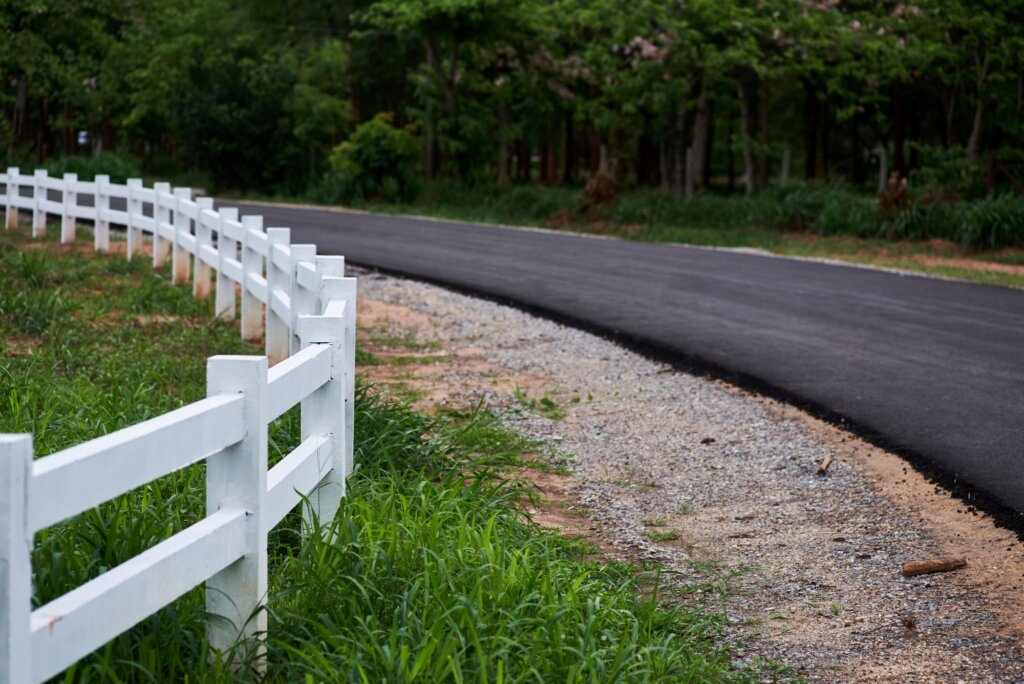Over time, asphalt driveways and walkways face a tough battle against elements like sunlight, water, oil spills, and everyday wear. Without proper maintenance and protection, they can fade, crack, or develop potholes. This is where sealcoating comes in.
But what is sealcoating, exactly? And why can it be a smart move for homeowners?
What is Sealcoating?
Sealcoating is a thin, protective layer applied over asphalt surfaces. It acts like a shield that defends your driveway or parking area. Over time, sunlight, water, oil, and traffic all wear down the surface of asphalt. Sealcoating slows this deterioration by forming a barrier that blocks out moisture, harmful UV rays, chemicals, and general wear and tear.

Key Benefits
Blocks Damaging Elements
Water is one of asphalt’s biggest enemies. When it seeps into cracks and freezes, it expands—which causes further cracking and potholes. Meanwhile, UV rays can cause oxidation, which dries out the surface and makes it brittle. Add in oil, gas, and other vehicle fluids, and you’ve got a recipe for degradation. Sealcoating helps prevent all of the above by creating a non-porous, protective layer.
Extends Pavement Life
Applying a quality sealcoat every 2 to 3 years can significantly extend the life of your asphalt and reduce the frequency of repairs. The actual lifespan extension depends on initial installation quality, traffic, climate, and maintenance.
Reduces Repair Costs
By preserving the integrity of the surface through sealcoating, homeowners can avoid expensive crack-filling, patching, or full resurfacing projects down the road. Note that existing cracks, holes, or other damages need to be repaired before you apply the sealcoat.
Boosts Curb Appeal
A freshly sealed driveway just looks better. The rich, dark finish can complement your home’s appearance and add visual value, whether you’re staying put or preparing to sell.
Best Practices for Sealcoating
Stick to a Schedule
For most residential properties, sealcoating every 2 to 3 years strikes the right balance between protection and cost-efficiency. Depending on traffic, climate, and condition, some homeowners might find that their asphalt benefits from more or less frequent application.
Choose the Right Time
Sealcoating works best in warm, dry weather, typically when temperatures are above 50°F and humidity is low. It’s important to avoid rain during application and curing. Also, new asphalt should cure for at least 6 months before the first sealcoat is applied.
Prep the Surface
Before sealing, make sure cracks and potholes are repaired, and the surface is clean and dry. Blowing off debris, cleaning oil spots, and filling gaps helps with proper adhesion.
Consider Hiring a Pro
While DIY sealcoating kits exist, professional contractors bring experience, equipment, and high-quality materials to the table. They know how to prep, mix, apply, and cure the sealant properly, which can make a significant difference in how long it lasts.
Sealcoating is a cost-saving, forward-thinking approach to protect your asphalt surfaces. When done correctly, it shields against damage, keeps surfaces attractive, and reduces long-term maintenance. A local asphalt professional can assess your pavement needs and apply sealcoat with expertise and high-quality equipment.